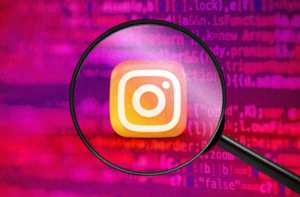In the vast digital landscape, safeguarding one’s privacy is akin to protecting a treasure. Private photo viewers stand as sentinels in this realm, promising to keep your visual memories secure. But how do they work their magic? Let’s peel back the layers and unveil the mechanics that make private photo viewers an essential tool in the age of digital exposure.
Private photo viewers operate on a simple yet effective principle – restricting access. When you upload a photo to a platform or app utilizing a private photo viewer, the image is encrypted or restricted in such a way that only authorized users can view it. Essentially, you’re putting up a virtual “Keep Out” sign, ensuring only those with permission can cross the threshold and witness the contents of the image.

The Encryption Enigma
One of the fundamental pillars of private photo viewers is encryption, a term that’s become synonymous with online security. In essence, encryption scrambles your photo into an unreadable format for anyone without the decryption key. Picture it like a secret code; only those who know the cipher can decode the message.
As you upload your photos to a private photo viewer, these platforms employ encryption algorithms to convert your image into an unreadable format. Even if a potential intruder intercepts the data, all they’ll see is a jumble of characters and numbers, much like cryptic language. To view the image, one needs the encryption key, a unique digital password that acts as the decoder ring, transforming the scrambled data back into your cherished photograph.
Authentication: Who Holds the Key?
Authentication is the mechanism that ensures the right person holds the decryption key. In the realm of private photo viewers, authentication is often through passwords, biometrics, or a combination of both. Imagine the encryption key as a ticket to an exclusive event; without it, entry is denied.
To unlock and view the encrypted image, you need to authenticate your identity. This process can involve entering a password, using your fingerprint, or facial recognition. It’s the system’s way of ensuring you are indeed the rightful owner of the decryption key and hence, have the authority to access the image. This authentication adds a robust layer of security, thwarting any unauthorized attempts to sneak a peek into your private gallery.
Permissions and Access Control: Drawing the Boundaries
Another vital aspect of private photo viewers is the granular control they offer over permissions and access. Think of it as having a VIP pass to a concert where you can decide who gets backstage access. Private photo viewers allow you to specify who can view each photo, providing you with unparalleled control over your visual content.
You can set permissions for individual photos or albums, designating specific individuals or a group of trusted contacts who can view them. This way, you can tailor access based on relationships, trust levels, or any criteria you choose. By having this level of control, you can share moments with precision, ensuring only those you trust can witness your memories.
Multiple Layers of Protection: Beyond Encryption
While encryption serves as the fortress wall, private photo viewers often deploy multiple layers of protection, akin to a castle’s moat and guards. These layers add complexity for any potential intruders, making it exponentially harder for them to breach your privacy.
Advanced private photo viewers employ techniques like two-factor authentication (2FA), device authentication, and end-to-end encryption. Two-factor authentication requires two forms of verification before granting access, making it significantly harder for unauthorized entry.
The Importance of Secure Networks
While private photo viewers themselves offer robust security, the overall safety of your photos is a product of various interconnected factors. Your network’s security plays a pivotal role; after all, a fortress is only as strong as its foundation. When using private photo viewers, ensure you’re on a secure, password-protected network.
Public Wi-Fi networks, especially unsecured ones, are breeding grounds for potential cyber threats. Always opt for encrypted, password-protected networks, preferably using a Virtual Private Network (VPN) for an added layer of security. The secure network acts as the shield, fortifying the barriers your private photo viewer sets up, guaranteeing a more robust defense against any malicious attempts.
In-Transit Encryption
When you upload a photo to a private photo viewer, it embarks on a journey through the digital realm. Just like safeguarding precious cargo during transit, in-transit encryption ensures your photo’s safety as it travels from your device to the server hosting the private photo viewer.
In-transit encryption is the security escort your photo deserves. It encrypts the data packets containing your photo while they traverse the internet, making sure they remain secure and intact. Without this layer of protection, your image could be vulnerable to interception and tampering. In-transit encryption guarantees a safe voyage for your memories, shielding them from prying eyes during their digital journey.
Educating Users for Stronger Security
No security system is foolproof without the human element being conscious and informed. Users must be educated about the importance of privacy, the significance of strong passwords, and the need for regular security checks.
Simple practices like not sharing passwords, updating passwords regularly, and being cautious of phishing attempts go a long way in bolstering the security of private photo viewers.
